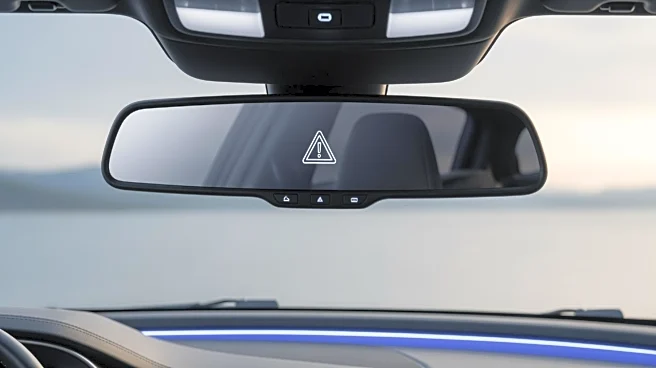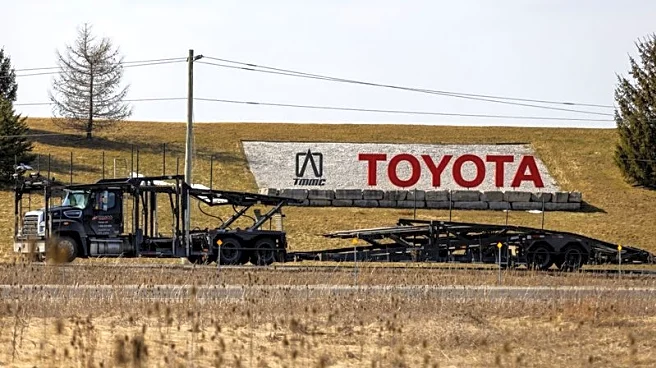What's Happening?
Toyota has announced a recall affecting over one million vehicles due to a defect in the backup camera system. The issue arises when the rearview camera fails to display properly on the infotainment screen
if certain actions are performed shortly after starting the vehicle. The recall affects a wide range of models, including various Lexus and Toyota vehicles, as well as the Subaru Solterra. The problem was identified following field reports in Japan, leading to an investigation that revealed a software glitch. This defect can cause the rearview image to freeze or fail to display, potentially compromising safety standards. Toyota is contacting affected owners to update the software at service centers.
Why It's Important?
This recall is significant as it impacts a large number of vehicles, potentially affecting consumer safety and trust in Toyota's technology. The malfunctioning backup camera poses a risk to drivers, as it may not provide the necessary visibility when reversing, increasing the likelihood of accidents. The recall underscores the importance of software reliability in modern vehicles, where technology plays a crucial role in safety features. It also highlights the challenges automakers face in ensuring compliance with safety standards, which can have financial and reputational consequences.
What's Next?
Toyota is actively reaching out to vehicle owners to rectify the issue by updating the software at authorized service centers. This proactive approach aims to mitigate safety risks and restore consumer confidence. The company will likely monitor the situation closely to ensure compliance with safety standards and prevent similar issues in the future. Stakeholders, including consumers and regulatory bodies, will be watching Toyota's response to this recall and its impact on the brand's reputation.
Beyond the Headlines
The recall raises broader questions about the increasing reliance on software in automotive safety systems. As vehicles become more technologically advanced, manufacturers must prioritize rigorous testing and quality assurance to prevent software-related defects. This incident may prompt industry-wide discussions on improving software reliability and safety protocols.













